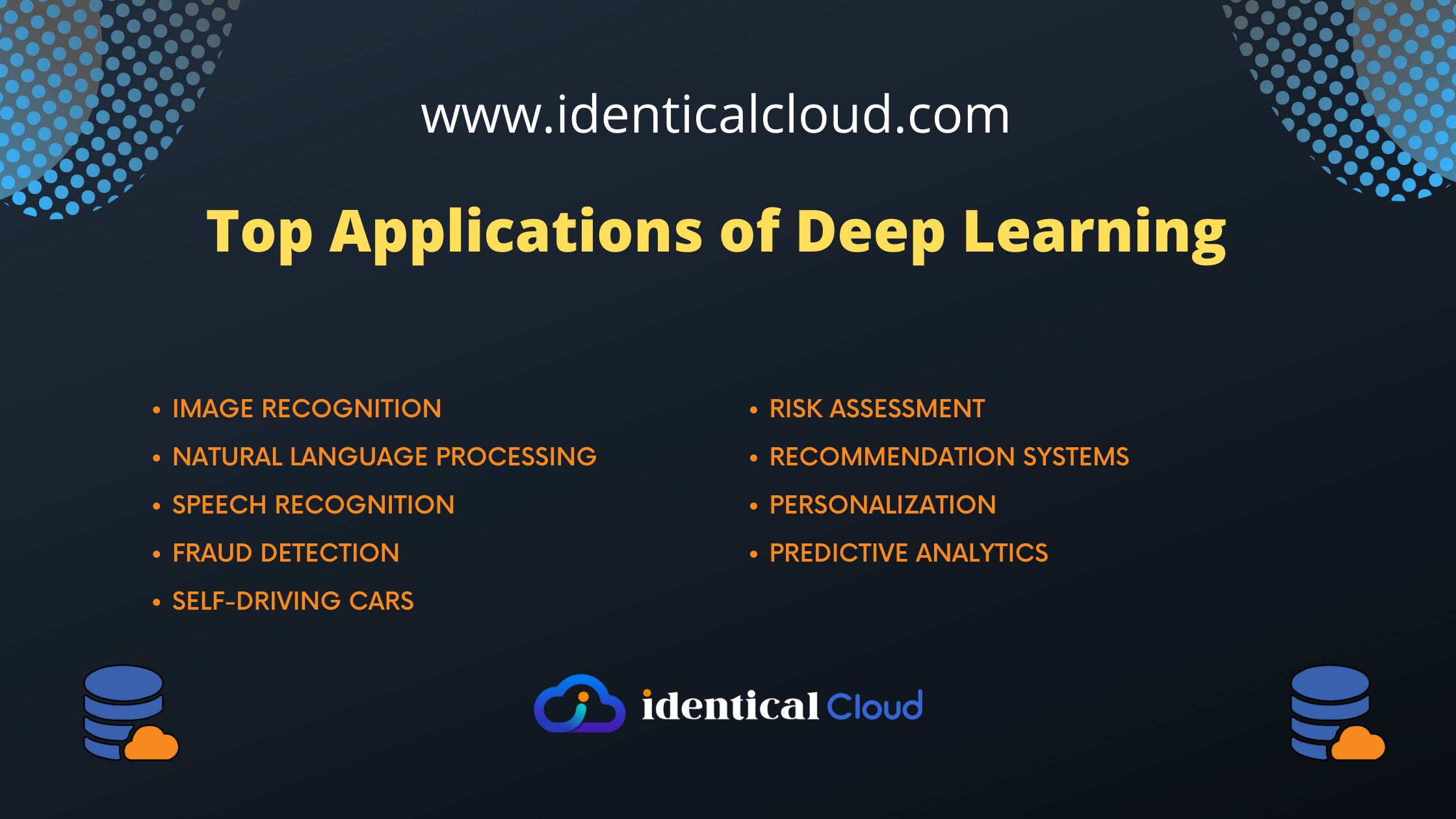
Top Applications of Deep Learning
Top Applications of Deep Learning
Deep learning, a subset of machine learning, has revolutionized the field of artificial intelligence by mimicking the human brain’s neural networks. Its ability to process large amounts of data and extract intricate patterns has led to remarkable breakthroughs in various domains.
In this blog, we will delve into the top applications of deep learning, showcasing its wide-ranging impact on industries and everyday life.
Image recognition
Deep learning is used in image recognition to identify and classify objects in images. This is done by training a neural network on a large dataset of images that have been labeled with the objects that they contain. Once the neural network is trained, it can be used to identify objects in new images.
Natural language processing
Deep learning is used in natural language processing to understand and process human language. This is done by training a neural network on a large dataset of text that has been labeled with the meaning of the text. Once the neural network is trained, it can be used to understand and process new text.
Speech recognition
Deep learning is used in speech recognition to recognize and transcribe human speech. This is done by training a neural network on a large dataset of audio recordings that have been labeled with the text that was spoken. Once the neural network is trained, it can be used to recognize and transcribe new audio recordings.
Fraud detection
Deep learning is used in fraud detection to identify fraudulent transactions. This is done by training a neural network on a large dataset of fraudulent and non-fraudulent transactions. Once the neural network is trained, it can be used to identify new fraudulent transactions.
Risk assessment
Deep learning is used in risk assessment to assess the risk of certain events. This is done by training a neural network on a large dataset of historical data that includes information about the events that occurred and the risks that were associated with those events. Once the neural network is trained, it can be used to assess the risk of new events.
Recommendation systems
Deep learning is used in recommendation systems to recommend products or services to users. This is done by training a neural network on a large dataset of user data, such as browsing history and purchase history. Once the neural network is trained, it can be used to recommend products or services to new users.
Personalization
Deep learning is used in personalization to personalize the user experience for customers. This is done by tailoring product recommendations, displaying targeted ads, or providing personalized customer support. This is done by training a neural network on a large dataset of user data, such as browsing history and purchase history.
Predictive analytics
Deep learning is used in predictive analytics to predict future events. This is done by training a neural network on a large dataset of historical data that includes information about the events that occurred and the results of those events. Once the neural network is trained, it can be used to predict the likelihood of future events.
Self-driving cars
Deep learning is essential for self-driving cars. The cars use deep learning to identify objects in their environment, such as other cars, pedestrians, and traffic signs. They also use deep learning to plan their routes and make decisions about how to navigate the road.
Deep learning has emerged as a transformative technology, enabling remarkable advancements in various domains. From image recognition and NLP to healthcare, autonomous vehicles, and recommendation systems, the applications of deep learning are diverse and far-reaching. As technology continues to evolve, deep learning will undoubtedly play a crucial role in shaping our future, offering immense potential for innovation and progress in multiple industries and everyday life.
